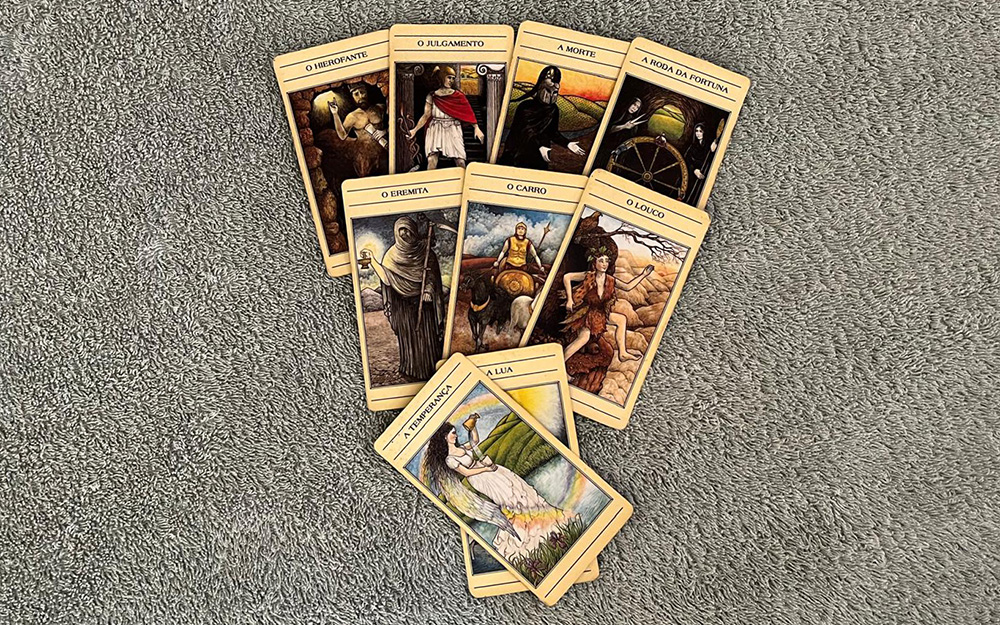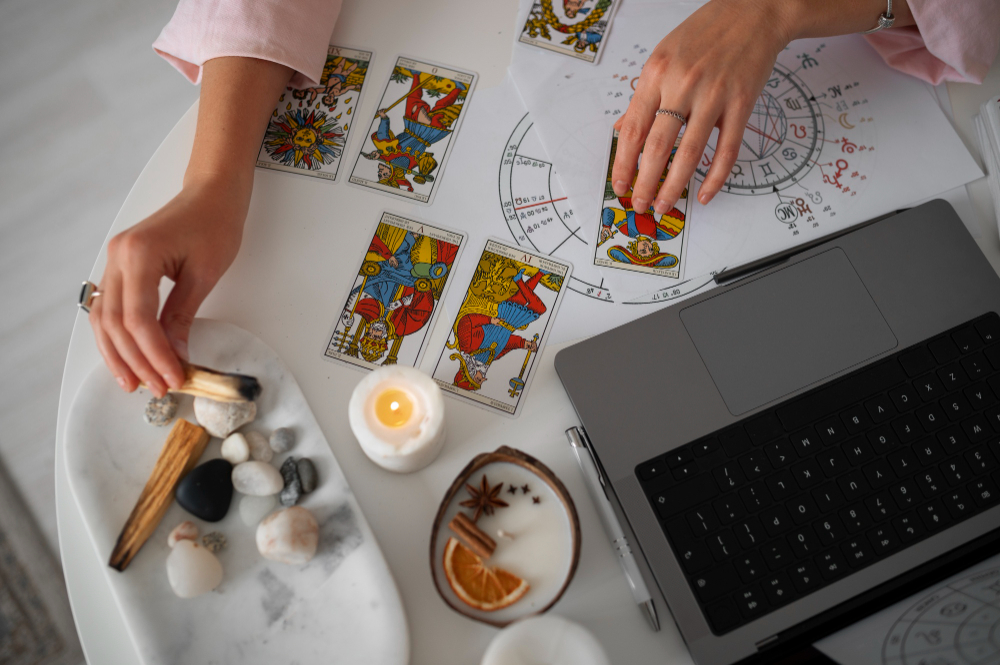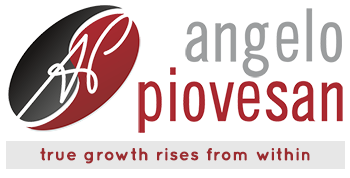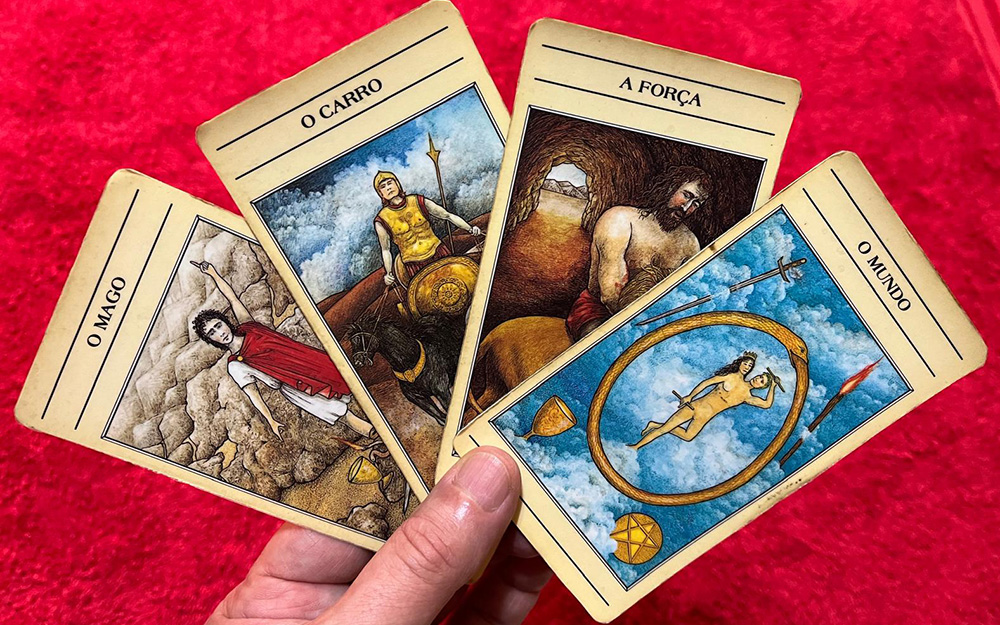The meaning of the Tarot cards takes us on a fascinating journey that allows us to explore the depths of human experience and the connection with the universe.
From its origins as a simple card game to its transformation into a powerful tool for self-knowledge and spiritual guidance, the Tarot offers a rich tapestry of symbolisms and meanings.
Each card carries within it a universe of interpretations, revealing not only aspects of our daily lives, but also profound lessons about our personal Journey.
In this article, I'll share some of my insights into the history of the Tarot, its relevance in different cultures, and how it connects to spirituality and self-knowledge.
I invite you to embark on this exploration with me and discover how the Tarot can illuminate paths and open doors to a deeper understanding of ourselves and the circumstances that surround us.
History of the Tarot
The history of the Tarot is interesting and full of transformations. I like to think of the origin of the cards as a reflection of cultural changes over time. Tarot cards appeared in the 15th century, initially as a card game in Italy.
What strikes me most is that these cards, known as tarocchi, didn't have a divinatory purpose in the beginning. They were used primarily for entertainment, and the idea of attributing spiritual meanings to them came Much later.
In the 18th century, the Tarot began to become associated with occult practices, especially in France. The work of figures such as Jean-Baptiste Alliette, also known as Etteilla, was crucial in this transition. He was one of the first to systematize Tarot reading as a form of divination.
As the Tarot gradually spread across Europe, it began to incorporate elements of local traditions, and it adapted and evolved continually.
The popularity of the Tarot grew in the 19th century, driven by the wave of interest in the occultism and spirituality that emerged after the Age of Enlightenment. At that time, the Tarot ceased to be just a game and came to be seen as a powerful tool for self-knowledge and spiritual guidance.
There are many other narratives, some less and some more materialistic, like the one I've just described. However, there are more esoteric narratives, which I may address in future articles, such as the one that sees the Tarot cards as a synthesis of the teachings left by the civilization of Ancient Atlantis.
Today, I have the impression that Tarot reading continues to fascinate people, offering a unique way to explore the inner self and attempts to predict the future
This transformation of the cards from a simple entertainment to an instrument of divination is a testament to their lasting impact on cultures Around the world.
Before we move on to the next topic, you might like to get to know the Tarot of the 7 Sacred Weeks, a practice I've developed over many years, a special Tarot reading that offers a guide for the year ahead.

Meanings of the Tarot cards
The meanings of the Tarot cards are vast and full of symbolisms, reflecting different aspects of life and human experience.
When exploring these cards, I come across a rich range of meanings that vary according to the position of the cards in the different card spreads and the reader's interpretation. The cards are divided into two main groups: the Major Arcana and the Minor Arcana.
The Major Arcana, made up of 22 cards, represent significant experiences and lessons that shape our spiritual and psychological path. Each of these cards, such as The Fool or The Death, has a profound meaning and is often associated with universal archetypes.
On the other hand, the Minor Arcana, which include 56 cards, focus on everyday situations and are divided into four suits: Hearts, Clubs, Spades and Diamonds - these are the cards from the regular deck that are used for games such as “Solitaire“, “Poker”, “Uno” etc. Each suit deals with different areas of life, such as emotions, actions, challenges and finances.
Together and integrated into the context, these cards help me to gain a holistic and in-depth view of issues and situations that may be affecting the lives of those who consult with me.
How does the Tarot Reading work?
The Tarot reading opens up a profound opportunity for self-knowledge and reflection. When someone comes for a consultation, my initial work consists of providing an overview of that person's life journey.
During the reading, I examine various situations, strengths and weaknesses, difficulties and recommend ways to overcome them. Using the structure of the 12 houses of the Astrological Wheel, I address aspects such as the present moment, finances, communication, home, relationships, health, spirituality, among others.
Each card that is revealed brings out a specific message related to one of the houses, allowing for a detailed and personalized analysis. After this initial overview, if there are still any doubts, I am happy to seek any further answers.
Every tarologist – or Tarot reader, like me, reads and interprets the cards according to their meanings and the houses they occupy in a “spread of cards”.
What makes my approach special is that I also connect with my spiritual guides, who inspire me and help to provide a more intuitive and meaningful servisse.

Reading methods
There are different Tarot reading methods, each with its own particularities and purposes. Among the most popular are the Celtic Cross and the three-card spread.
The Celtic Cross is a more elaborate method, which offers a comprehensive view of the consultant's situation, considering past, present and future, as well as obstacles and external influences. The three-card method, on the other hand, is simpler and more straightforward, ideal for quick consultations, where each card can represent the past, present and future or a specific situation.
When choosing the right method for the consultation, I take into account the needs and context of the person who is seeking help. The choice of the right reading method can have a profound impact on the reading, providing valuable insights.
It is important that the client is open and receptive, allowing the cards to reveal messages that can be transformative and enlightening.
Psychological aspects of the Tarot
The Tarot plays a fundamental role in self-reflection and self-knowledge.
During consultations, I realize that the cards work like a mirror, reflecting what is inside the mind and heart of the client. This internal dialog helps me to conduct the reading in such a way as to explore hidden and complex aspects of the psyche.
Through card interpretation, I am often able to guide the person to discover their behavioral patterns, traumas and potential, helping them to make more conscious decisions in line with their purpose.
Intention and focus are crucial during the reading. It is essential that both the client and I, as the tarologist, are aligned in terms of intention, creating a safe and sacred space for the work to flourish.
With this focus, the answers that emerge from the Tarot can become true guides for life, allowing the person to better understand their Karma and their Dharma, as well as giving meaning to their journey.
The Tarot and spirituality
The connection between the Tarot and spirituality and mystical practices is something that has always fascinated me. I see the Tarot as a divinatory oracle, which goes far beyond simply predicting the future; it offers a deep insight into the inner and outer aspects of a person's life.
In each consultation, discoveries are made that help to unravel the person's evolutionary path. By understanding what lies behind their personal issues and challenges, it is possible to see what needs to be worked on, allowing for a deeper understanding of the moment they are experiencing.
Carl Gustav Jung, one of the great names in psychology, studied the relationship between mysticism and the human psyche, identifying oracles as a powerful tool for self-knowledge. He believed that oracles promoted a dialog with invisible forces, revealing aspects of the unconscious.
For me, the Tarot acts as an important spiritual guide, helping to navigate through life's uncertainties. In times of great turmoil and transformation, looking inwards and understanding our purpose in life becomes even more necessary.
When working with the Tarot, I am constantly reminded that it is not just a set of cards, but a tool that can illuminate the paths of personal evolution and help each person to unveil their inner strength.
So, I invite everyone to explore this journey of self-discovery and spiritual growth that the Tarot can provide!

Meanings of the Tarot cards in different cultures
The meaning of the Tarot cards varies widely between different cultures and traditions, reflecting the diversity of interpretations and the rich history surrounding these cards.
Over the centuries, the Tarot has been shaped by mystical and philosophical influences from various parts of the world.
For example, in the Western tradition, we often associate cards with Hermetic teachings and Jewish mysticism, such as the Kabbalah. In this context, the cards are seen as a key to universal wisdom, allowing a deeper connection with the cosmos.
On the other hand, in some Eastern cultures, such as India, the Tarot can be seen as a complementary tool to practices such as Hinduism and Buddhism, which emphasize self-knowledge and spirituality. In this sense, the Tarot serves as a means of exploring one's own soul and the life lessons that need to be learned.
In addition, some indigenous and shamanic traditions also incorporate the use of Tarot-like cards or symbols into their spiritual practices, emphasizing the connection with nature and the universe. These cards are interpreted not only as reflections of everyday life, but as guides that help to align the individual with natural cycles and ancestral teachings.
So, as I study the meanings of the Tarot cards, I realize that each culture brings a unique lens through which we can explore our own being and the personal journey we are all taking.
This diversity not only enriches our understanding of the Tarot, but also invites us to reflect on how we can integrate these wisdoms into our modern lives.
Conclusion
The Tarot presents itself as a divinatory tool that transcends time and cultural boundaries, offering a way to explore and understand our life journey. Understanding the meanings of the cards in different contexts helps us to enrich our own interpretation and open new doors to self-discovery.
I invite you to do a Tarot reading remotely, by videoconference, with me, Angelo Piovesan. My experience spans more than 40 years of holistic and esoteric studies, and my commitment is to guide you in the search for answers and the exploration of your personal journey.
As a communicator and educator, I've always looked for ways to connect knowledge with practice, and the Tarot is one of the most powerful ways of doing this.
Let's go together to unravel the mysteries surrounding your life and find clarity on the issues that are troubling you. The Tarot reading is a path to self-knowledge and the expansion of consciousness.
I'm here to help you to discover and better understand your life journey. Don't hesitate to get in touch and book your appointment!
May the Light of Love be the guide of all paths, at all times, in all circumstances, with all the people. And may Love foster Peace!

